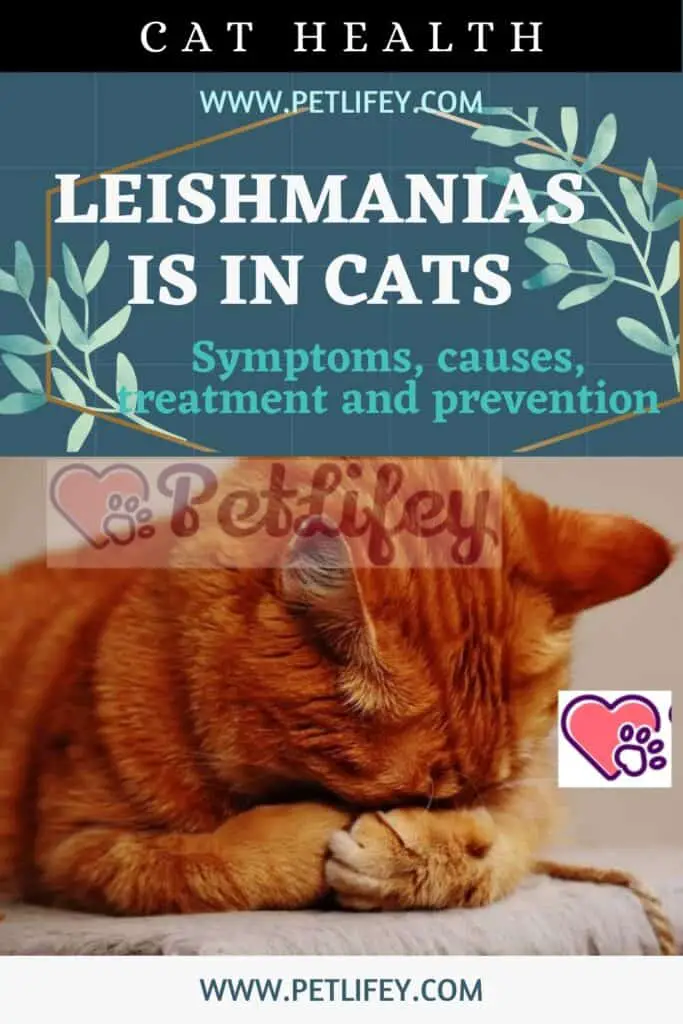
The leishmaniasis in cats is a disease care more frequent and common in cats. It starts with an insect bite and can make your cat seriously ill, jeopardizing its life. Throughout this article we will explain what leishmaniasis in cats consists of, the causes, symptoms and treatments to combat this disease.
Causes of Leishmaniasis in Cats
When talking about the causes of this parasitic disease, we refer to the infection caused by the Leishmania infantum parasite . This parasite or protozoan, enters the body of your cat through the bite of an insect called Phlebotome, infecting it with leishmania. However, only cats with a weak immune system or that are suffering from any disease, can be harmed by this infection. Otherwise, that is, a cat with a strong immune system could easily eliminate it.
This disease occurs commonly in areas of the Mediterranean, because the Fletobo (transmitting mosquito) usually lives and reproduces in humid areas with warm or temperate temperatures.
It is for this reason that cats that live in Spain are usually at risk of being infected with Leishmania during spring, summer and early autumn. Well, they are the times in which the environmental conditions become favourable for the reproduction of the mosquito.
Symptoms of Leishmaniasis in Cats
Cats affected with Leishmaniasis can suffer from different symptoms or clinical signs that can be easily detected by the cat caregiver. Since many of these indicate marks on the skin and especially changes in the animal’s state of mind.
Some of these mostly skin symptoms involve:
● Scabs and ulcers on the skin
● Wounds or marks on the skin (skin) or mucocutaneous (mucous), tongue and eyes.
● Decay or weakness.
● Nodular dermatitis or appearance of nodules in any area of the body (head, ears, eyelids, legs)
● Squamous dermatitis
● Conjunctivitis
● Anemia
Some more serious cases of Leishmaniasis can develop visceral conditions such as:
● Low appetite, weight loss, and anorexia.
● Vomiting and diarrhea
● Nosebleeds
● Liver and kidney problems.
Treatment of Leishmaniasis in Cats
Currently there is no specific treatment to combat Leishmaniosis in cats, since it is a disease that dogs tend to develop more often.
However, the first thing to do to start a treatment against leishmaniasis in cats is to focus on raising the defences by supporting the animal’s immune system. In this way your body would begin to fight internally against the infection and on the other hand it would protect itself from acquiring other diseases such as flu that could seriously worsen the patient’s health while suffering from Leishmania.
On the other hand, healings should be carried out on all wounds, nodules and ulcers that are affecting the animal’s body. And last but not least, it must be clear that even though the wounds disappear and the cat is apparently healthy, it must continue to have control. Where regular vet visits are made to prevent the disease from re-developing.
Leishmaniasis Prevention

Before starting to fight a cat disease as complicated as Leishmaniasis, the best option to consider is prevention. In this way we can prevent our cat from going through unnecessary pain.
When talking about prevention, we must focus on 2 main issues. On the one hand in hygiene. Both the home environment and the places I frequent, as well as the animal’s body.
Because the insect that transmits this disease occurs during specific times of the year and humid environments that are friendly to its reproduction. This is why it is important:
● Keep the house disinfected with anti-mosquito and anti-insect products,
● Avoid water stagnations where these insects can reproduce.
● The use of pipettes, tablets or deworming injections that prevent the development of this parasite in the cat’s body.
On the other hand, the second issue that you should take into account when talking about prevention is to worry about improving your pet’s immune system. For a strong cat with a strong immune system it will be easy to eliminate this parasite and not develop the disease. You can achieve this in the following way:
● Feeding your cat with a feed that provides high quality nutritional components that help it to be healthy and strong.
● Eating an organic diet.
● Supply of vitamins that raise your defences.
● Probiotics supply (recommended by your trusted veterinarian)
● Avoid stress in your cat, as this is a threat to the immune system of any organism.
By following these prevention tips, you will work to maintain your cat’s health by avoiding suffering from serious diseases such as “Leishmaniasis in cats“.






